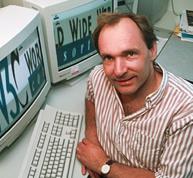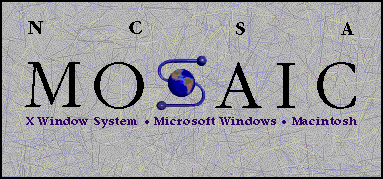
TIM BERNERS-LEE
A Brief History of Computers
1990-Present
Tim Berners-Lee at CERN, the European Particle Physics Laboratory, in Geneva dubs his hypertext project the World Wide Web. He develops a Web server and browser and posts them at CERN.

TIM BERNERS-LEE
Microsoft ships Windows 3.1 in March of 1992, which will become the most popular version of Windows until the release of Windows 95. Windows 3.1 is viewed as a major improvement over earlier versions of Windows, originally released in 1985.

In 1994, Marc Andreesen, a recent University of Illinois graduate, and Jim Clark, founder of Silicon Graphics, team up to form Netscape. The pair initially call the company Mosaic Communications, after the free Web browser that Andreesen helped write and distribute over the Internet in 1993, but change the name based on legal objections. The company goes public in August 1995 and will be purchased by America Online in 1999.

Stanford University doctoral students Jerry Yang and David Filo begin compiling an online database of Web sites as a personal hobby. They post the database on a Stanford Web server. By 1995, heavy traffic forces them to relocate the site to servers at Netscape. The company goes public in 1996.

Buyers line up on August 23 to buy the first copies of Windows 95, Microsoft's newest operating system. Windows 95 offers a much-improved graphical user interface, the ability to multitask, and impressive speed. Within six weeks, the product will sell seven million copies.

Microsoft releases its Internet Explorer browser on August 11, 1996, to compete with Netscape's Navigator software. The two companies engage in a rapid series of upgrades and promotional offers to win market share.

Apple unveils a new personal computer, the iMac, during August of 1998. The machine, made of brightly colored translucent plastic, becomes an overnight success, selling some 800,000 units in its first four months on the market. The iMac's success boosts Apple's dwindling market share to 5 percent.

THE IMAC COMPUTER
During 1999, the plummeting price of PCs
leads some companies to offer free or very cheap PCs if users sign up for
online services. One company, Free-PC.com, distributes free computers to
people who agree to share personal information and download Internet advertising.